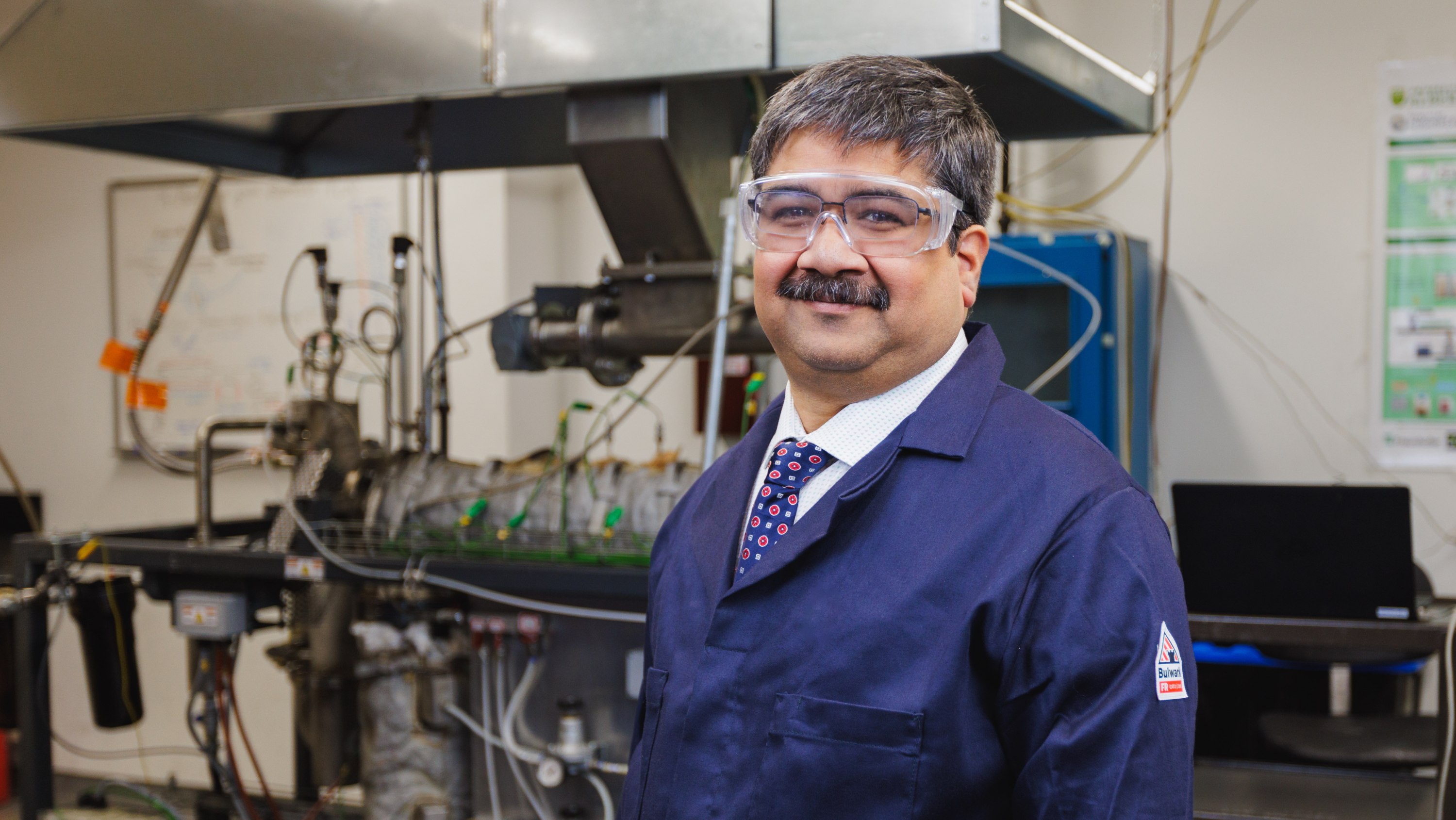University of Alberta energy researchers have received almost $2 million from Natural Resources Canada (NRCan) to help the country reach net-zero greenhouse gas emissions by 2050.
Amit Kumar — Canada Research Chair in Assessment of Energy Systems and deputy director of Future Energy Systems — and his team were awarded a total of $1.8 million by NRCan for two projects to assess the costs and environmental footprint of integrating a range of sustainable energy technologies into Canada’s energy transition over the next two decades.
“The key question in this transition is how to choose the environmentally friendly, economically viable and socially acceptable energy pathways,” says Kumar.
One of Kumar’s projects will use artificial intelligence, data mining and computer-based models to calculate short-, medium- and long-term energy forecasts, he says.
That modelling will consider the growth of various renewable options — including solar, wind, biomass, geothermal and hydro energy — in combination with non-renewable sources to help transition away from fossil fuels. The forecast will also account for the contributions of energy efficiency and carbon capture technology to the equation.
“We are looking at a complex combination of all the different types of energy to assess overall decarbonization pathways for Canada,” says Kumar.
The second project funded by NRCan will take a detailed look at various forms of CO2 removal technology (CDR). In collaboration with Mission Innovation — a global coalition of 23 countries and the European Union aimed at clean energy innovation — Kumar will estimate how the technology is likely to develop in the next 20 to 30 years.
“Carbon dioxide removal technologies are still at early stages,” says Kumar. “We are trying to understand which are cost-effective and will make more sense for industry, and what the expected overall environmental footprint will be.”
The focus of the carbon removal project over the next five years will be on three emerging technologies — direct air carbon capture, biomass-based carbon dioxide removal and enhanced mineralization.
Direct air carbon capture — unlike conventional carbon capture carried out at points of emissions such as steel or power plants — involves extracting CO2 directly from the atmosphere at any location. The captured carbon can then be stored underground or used to make sustainable fuels, low-carbon concrete, carbon black or other industrial products.
Bioenergy with carbon removal and storage employs the natural ability of plants to convert carbon dioxide into biomass, which can be stored underground or used to produce hydrogen or other fuels. Enhanced mineralization uses minerals such asolivine or basalt to absorb carbon, producing stable rocks that can be either injected underground or crushed and spread over soil to improve its quality.
These latest NRCan projects are just two of many research programs Kumar has taken on to help Alberta’s and Canada’s energy transition. He has advised the Alberta government in developing its Hydrogen Roadmap. He has also been listed by Reuters as one of the world’s most influential climate scientists and has served on expert advisory panels across Canada, the United States and Europe.
In a 2019 paper in the Journal of Cleaner Production, his group found that by investing in new energy-efficient greenhouse gas mitigation strategies, oilsands producers could net significant profits. The team estimated that cumulative energy consumption in the oilsands could be reduced by as much as eight per cent and greenhouse gas emissions by seven per cent by 2050.
Kumar says there has been rapidly increasing demand over the past two decades for his expertise in arriving at detailed energy assessments, as energy companies and governments look to make sound and sustainable energy decisions.
“The tools and methods we use to assess all of these technologies could then be used globally in decision-making and policy formulation.”
